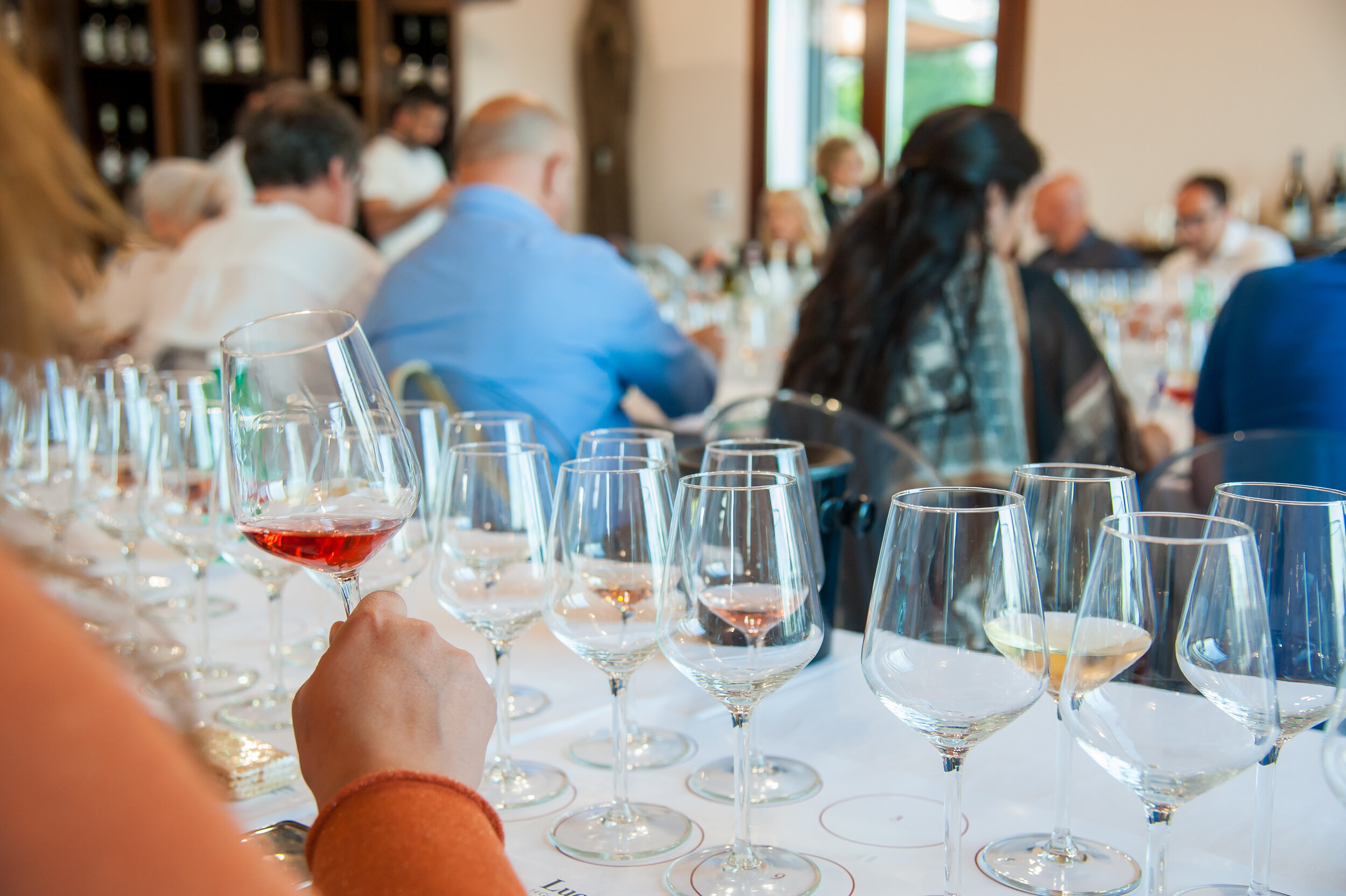Tasting with the Professionals
by Seema Tikare
Commonwealth Wine School recently hosted the trade association, “Wines of South Africa,” that promotes South African wines around the world. Having attended it, I wanted to share with you what it is like to attend a trade tasting and a little about the wines themselves.
In general, trade tastings are free to those in the trade – sommeliers, retailers, distributors, teachers and writers. The purpose is multifold. One is just to remind us that the type of wine they are promoting is there and good. (Un)fortunately, we live in a time of wine riches, an embarrassment of riches and sometimes it is difficult to remember all the myriad wines we can choose from. Like all people, we fall into ruts and habits.
Second, the tasting is to introduce us to the new vintage that has just been released. Usually, with white wines, it is the previous year’s vintage. With red wines, it might be 2 or 3 or even more vintages ago depending on the aging requirements.
Third, it is to let us taste through several expressions of the same grape variety so that we can learn and remember the character that each vineyard, winemaker and stylistic choice brings to a wine. Not to mention it is also usually a taste-through of a range of prices, from entry-level wines to super premium wines.
And finally, fourth, it is to teach us the stories around a wine. How did that winemaker go from humble grower to celebrated enologist? Or how many generations has it been since the first old vines went into the ground and how have those vineyards been nurtured? Sometimes, it as simple as knowing where a name for a wine comes from. We had the immense privilege of meeting some famed winemakers over zoom – one of them being Ken Forrester who has a legendary wine called “FMC,” for Forrester Meinert Chenin, but is better known as that “f***ing marvelous Chenin.” After hearing that story, it would be hard to turn down that bottle of wine, so knowing the narrative around selling wine is absolutely essential.
Which brings us to the wines we tasted – that is tasted and then spit out! We tasted three flights of six wines each, totaling 18 wines, beginning with South African (SA) sparkling wine – called “Cap Classique.” It is traditional method wine like Champagne and of very good quality. While it is still a growing segment of the market, we were able to try some excellent examples. Graham Beck was the grandfather of this style of wine in SA and we got a very in-depth view into the Cap Classique market and methods speaking with their wine maker, Pieter Ferreira.
Next came the flight of Chenin Blanc. If Argentina’s signature grape is Malbec and New Zealand’s is Sauvignon Blanc, then South Africa’s is Chenin Blanc, sometimes called “Steen,” there. As Ken Forrester pointed out, the vineyards in South Africa were being planted before the Medoc in Bordeaux had been dredged (by the Dutch!) to be arable for grape vines. And not only are the vines old, many of them are ungrafted because the soils of SA are hostile to the scourge of phylloxera. As a result, Chenin from SA is truly unique, bringing a distinct set of aromas and flavors to the wine. And we got to try 6 great Chenins, reminding us that the Loire is not the only place to look for Chenin and it is not necessarily the best either. Chenin, always high acid, can also have a soft, round mouthfeel and wonderful fruity characters without being sweet like a Vouvray or steely and dry like a Savennieres.
Finally, we came to the flight of Cabernets. And I have to say, this is the flight that surprised and delighted me the most. I had always categorized SA reds as either “not serious,” or too funky – given the flavors of Pinotage. But the Cabernet Sauvignons were refined and elegant, tannic and velvety, fruity yet structured and overall – serious wines.
And after the tasting, it is always a pleasure to debrief with people whom you respect in the same field and get all the different perspectives that wine can engender. But I have to say, it is also exhausting. Palate fatigue is a definite draw back. I rarely want to have wine to drink after a trade tasting. But I do love to think about what I tasted and learned and dig deeper into some of the vineyard or winemaking issues that arose during the tasting. Cheers!

